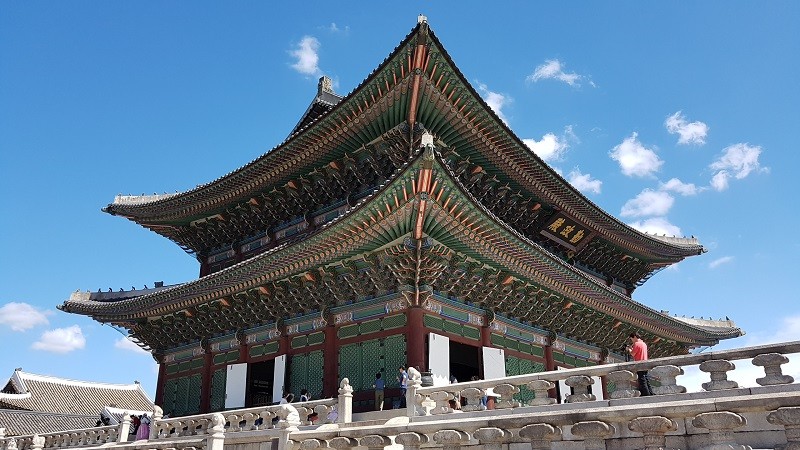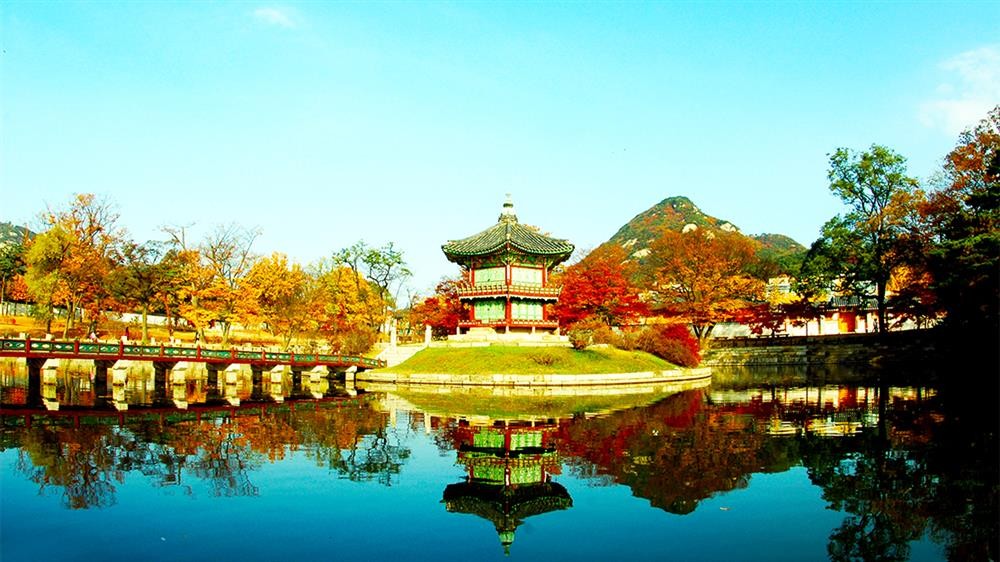Explore Gyeongbokgung Palace - the picturesque Palace of Happiness
For tourists who love Korean culture, Gyeongbokgung Palace is an extremely suitable tourist destination. Considered the largest palace among the five great palaces of the Joseon Dynasty, this palace has unique architecture and is imbued with the traditions of ancient times. In contrast to the hustle and bustle of Seoul's streets, this palace will immerse you in an ancient, majestic space and experience the most unique activities of Korean culture. Let's explore the best things about the Gyeongbokgung palace destination
Some information about Gyeongbokgung Palace
Gyeongbokgung Palace is a building built in 1395. The palace is named Gyeongbokgung, implying blessings for the king, his descendants and all his subjects. This palace also has another very meaningful name, which is Canh Phuc Palace The place is located in the center of Seoul with an area of 400,000 square meters surrounded by two mountains Namsan and Bukaksan. The palace is the embodiment of the rule and majesty of the Joseon Dynasty, and is a historical and cultural symbol of the land of kimchi.
The place is located in the center of Seoul with an area of 400,000 square meters surrounded by two mountains Namsan and Bukaksan. The palace is the embodiment of the rule and majesty of the Joseon Dynasty, and is a historical and cultural symbol of the land of kimchi.
Which season is best to visit Gyeongbokgung?
Gyeongbokgung Palace in Seoul has different beautiful scenes at each time, depending on your preferences, you can choose the right time to visit. However, according to locals and many tourists, you can visit Canh Phuc Cung in the fall. Because autumn here brings an extremely peaceful beauty, poetic scenery soothes people's hearts.
When you come to Canh Phuc Palace in Seoul in the fall, you can see maple leaves dyeing the sky red, and the road has the colorful yellow color of almond leaves. The two colors seem to be opposites, but when combined, they create a beauty that makes visitors fascinated and reluctant to leave.
Places to visit in Korea's Palace of Happiness
Gyeongbokgung Palace, also known as Kyong - bok, in Sino-Vietnamese means Canh Phuc, which means happiness lives forever here. Gyeongbokgung Palace in the city of Seoul was built in 1395, and from 1392 to 1910 - it was the main court of many Joseon dynasties. The total area of the palace is 410,000 square meters, including 5,792 rooms and 330 mansions. The main areas of the palace include: main court activities area, living and resting areas
1. Need Main Hall
This is the area where the king's throne is located and where royal trials are held. Government functions and reception of envoys from different countries are carried out in this palace. Can Chinh Palace is also the widest and highest place in the palace area.
2. Tu Chinh Dien
Still using the same design, this area looks more solemn. If you are standing outside, the pattern on the palace's tiled roof will definitely catch your eye. Wearing a beautiful Hanbok and taking photos next to the Si Chinh Hall, seems to have returned to the early period of the Joseon era.
3. Khanh Hoi Lau
Khanh Hoi Lau is located in the middle of an artificial lotus pond and is considered the most beautiful part of this famous Gyeongbokgung Palace. This place is used to entertain envoys in the palace, banquets on national occasions, giving rewards or praying for rain,...
4. Quang Hoa Mon
This is a main gate area of Gyeongbokgung Palace. The top floor of the gate is designed as 2 floors with 3 archways. The highest middle door is the king's path, the remaining two doors are the mandarins' path. A special feature of this gate is that on the roof there is a large bell hanging, used to tell the time.
5. Khang Ninh Dien
Khang Ninh Dien is where the king rests. The palace is relatively large and has space. The place where the king rests is the main palace, which is also the largest and most majestic place in the palace. The booths are heated on both sides and have plank floors and stone steps stacked high in front of the booths.
6. National Palace Museum
This is a museum that preserves and commemorates the most unique cultural features of the Joseon Dynasty royal palace. Coming here, visitors can enjoy the most unique and unique culture in the palace, and better understand the emperor's life at that time. The National Palace Museum is divided into 5 main areas, including: where records and symbols of the dynasty are kept, where religious activities are recreated, and where royal architectural works are kept. History, scientific achievements, and life are recreated in the royal palace at that time
The National Palace Museum is divided into 5 main areas, including: where records and symbols of the dynasty are kept, where religious activities are recreated, and where royal architectural works are kept. History, scientific achievements, and life are recreated in the royal palace at that time
National Folk Museum at Gyeongbokgung Palace Not only is it a museum that preserves royal cultural values, but the palace also has a museum that recreates the lives and objects of Koreans from ancient times to the present. As a place to preserve more than 400 artifacts of historical value, this place most clearly demonstrates the traditional culture of the Korean people through ups and downs. Visitors to Seoul will definitely have interesting experiences, the most special of which is this tourist destination
Some interesting activities at Gyeongbokgung Palace
Previously, the changing of the guard ceremony at Gyeongbokgung Palace was carried out according to a very special ritual. Today, when visitors come here, they will witness the changing of the guard scene performed by actors. This special ceremony will be repeated every day at 10 a.m. at Gwanghwamun, or Guanghemen, the main entrance to the palace, and last about 15 minutes. The ceremony will take place every hour, with the final changing of the guard at 3pm at the end of the day.







































